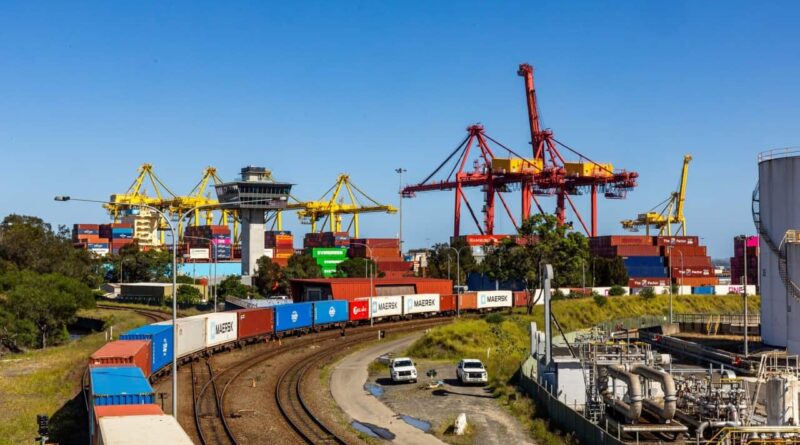Australia spared tariff hike as Donald Trump raises rates for 92 nations
Listen to Australian and world news, and follow trending topics with SBS News Podcasts.
“Trump likes tariffs and he thinks they’re useful for his policy goals. A lot of economists will disagree with a lot of those with a lot of those conclusions, especially that tariffs are an effective way to deal with trade deficits. And most of all, that tariffs are are useful in… or that these bilateral trade deficits that Trump seems to be worried about – are even something to be concerned about.”
That’s Dr Scott French who’s a senior lecturer in economics at the University of New South Wales.
Just hours before a pause on US tariffs was due to be lifted, US President Donald Trump signed an order for new tariffs on selected trading partners.
Australia managed to avoid an increase in the tariffs imposed by the US.
The rate remains at the lowest level of 10 per cent.
That is a relief for Australian exporters who had been warned that the tariffs could go as high as 20 per cent.
But the overall impacts of the tariff changes announced by President Trump, including on inflation, is something that remains to be seen.
“The United States continues to sort of cut itself off from the rest of the world. So we’ve already seen the recent the US inflation numbers just recently came in and then was a little bit higher than expected. We’re starting to see some of those higher import prices work their way through after companies are running down their inventories that they built up during the pause after April 2nd.”
Most of the new tariff hikes were first announced in April when President Trump imposed a baseline 10 per cent levy on goods from almost every country in the world, citing unfair trade practices and US deficits.
He then announced a pause on the implementation of tariffs to allow for negotiations.
Now, the new country-specific tariffs will come into effect from August 7.
The hardest-hit countries are now subject to tariffs of between 39 and 41 per cent: including Syria, Myanmar, Laos and Switzerland.
In a statement, the White House says higher rates were imposed on countries that it viewed as failing to engage in negotiations, or not aligning sufficiently with the US on on economic and national security matters.
And all goods that are considered to have been what’s called “transshipped” – to avoid applicable duties – will be subject to an additional 40 per cent tariff.
“That means that if the United States customs determines that you are just shipping a good via a third country in order to avoid the tariff, then they’re going to put a 40 per cent tariff on that I, the way it’s worded, I think gives a lot of discretion. To customs officials to make that determination. So that’s introducing a lot of uncertainty.”
Dr French says there’s still a lot of details to be worked out – and it’s still going to be highly disruptive to the global economy.
“That gives Australian producers a bit of a advantage, exporting to the US market still what it’s going to mean is that the US is just going to be less engaged in global trade. And so I think where that’s most disruptive is the North American trade.”
Australia’s neighbours – New Zealand, Fiji, and Papua New Guinea – were hit with a tariff of 15 per cent.
The Trump administration is still considering a possible 200 per cent tariff on Australian pharmaceuticals.
Trade Minister Don Farrell says the government’s approach has proven to be the right one – and he hopes that this is now the end of the matter.
“I think this is a vindication for the Albanese government and particularly the Prime Minister in a cool and calm way that we have conducted diplomacy with the United States. What this decision means in conjunction with all of the other changes to other countries is that Australian products are now more competitive into the America market.”
Historically, Australia has had an annual trade deficit with the US of about $30 billion – which means Australia imports more from the nation, than it exports.
However, there are Australian exports impacted such as meat, gold and pharmaceutical products.
Minister Farrell says Australia will continue to diversify its trade relationships and support Australian exporters.
“We believe in free and fair trade and we will continue to put the argument to the United States that they should remove all tariffs on Australian products in accordance with our free trade agreement and we will continue to prosecute that argument. In fact I’ve invited Commerce Secretary Lutnick to Australia to continue the discussions.”
92 nations were listed by President Trump as being subject to higher tariffs.
There were nations who were pleased with a revised tariff rate.
Cambodia says it is glad to see the rate has been reduced for the previous rate of up to 49 per cent – to a new rate of 19 per cent.
Cambodia’s Deputy Prime Minister Sun Chanthol says that will better support the country’s garment manufacturing industry, which would have faced collapse under the higher rate.
However, other nations have not fared so well.
Canada’s Prime Minister, Mark Carney, says he is disappointed that the tariffs for his country were increased by another 10 per cent to 35 per cent for products not covered by the US-Mexico-Canada trade deal.
Mexico has been granted a 90-day reprieve from higher tariffs of 30 per cent to provide more time to negotiate a broader trade pact.
China was excluded from the 92-nation list. The country has till the 12th of August for a deal to potentially be reached.





